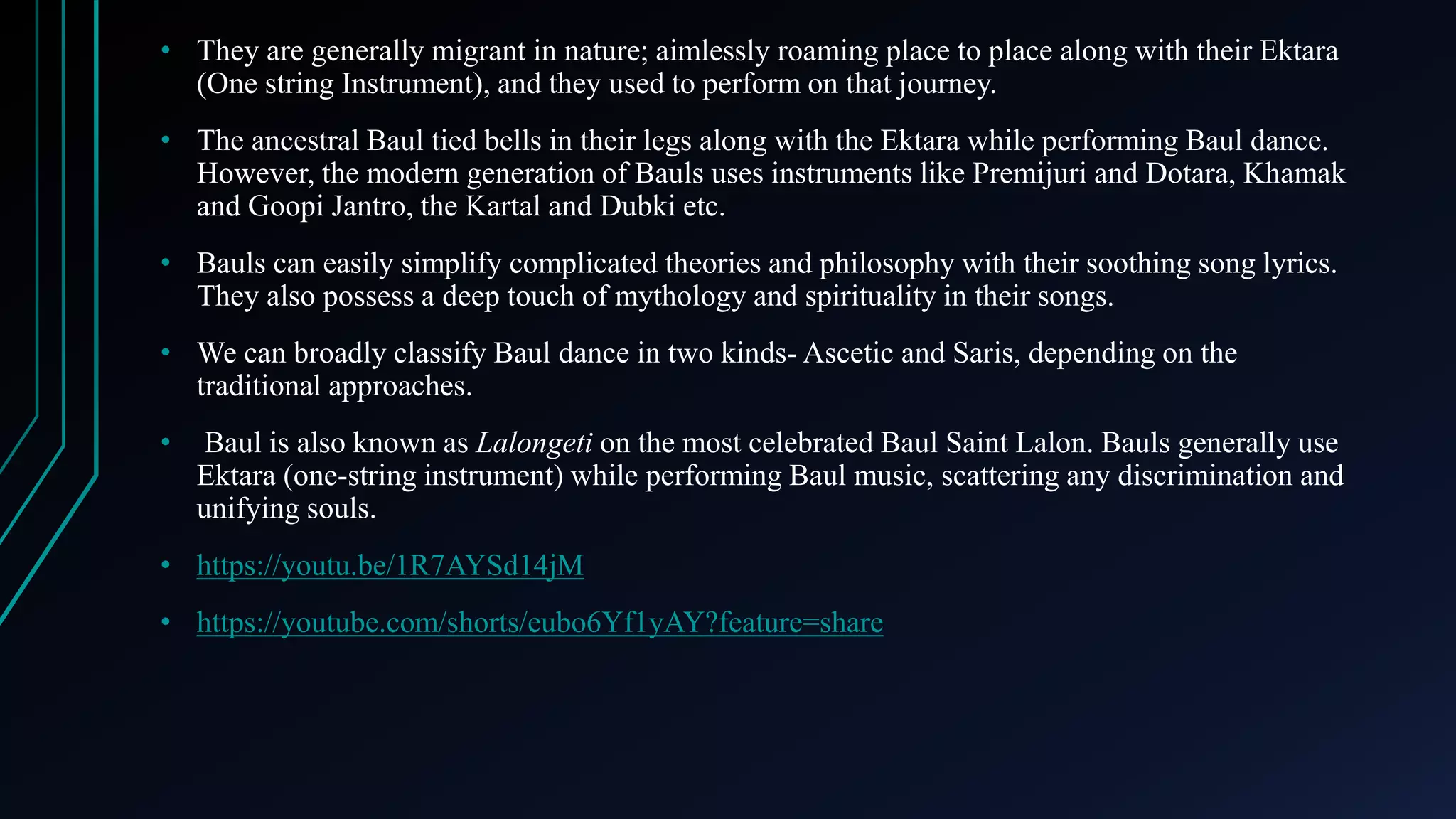The document summarizes several folk dances from West Bengal, India. Some of the dances described include Gambhira, a devotional dance performed in honor of Shakti; Dhali, a war-themed dance performed by men with cane shields and bamboo sticks; and Baul dance, a spiritual dance aimed at interacting with the divine in the human soul. The dances reflect the rich cultural traditions and rituals of the various communities in West Bengal.
















































